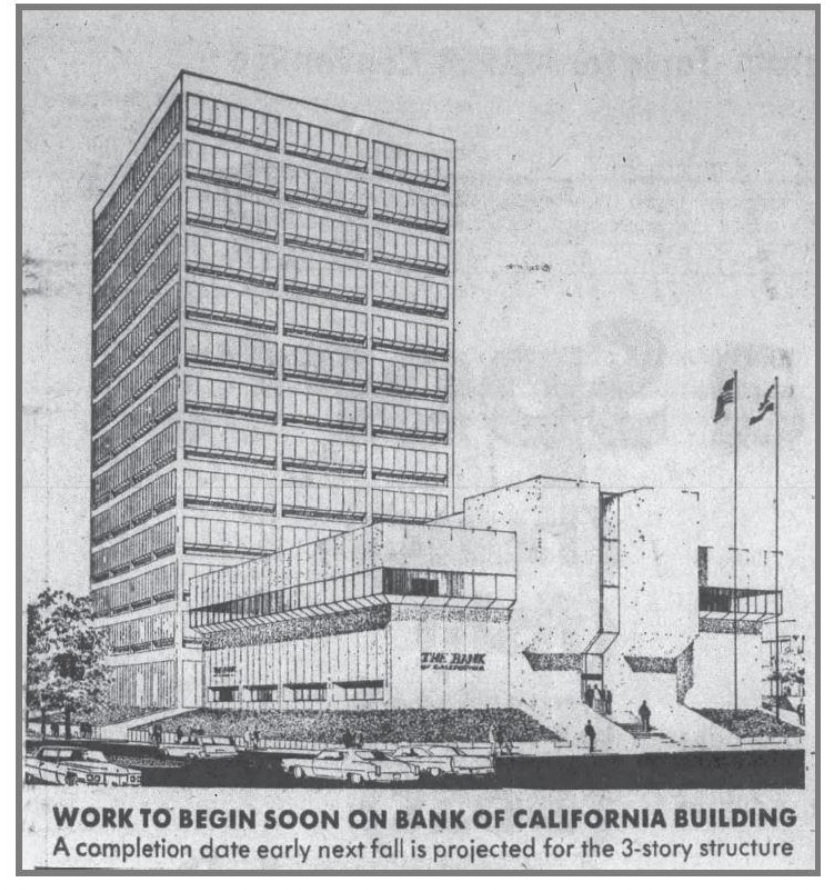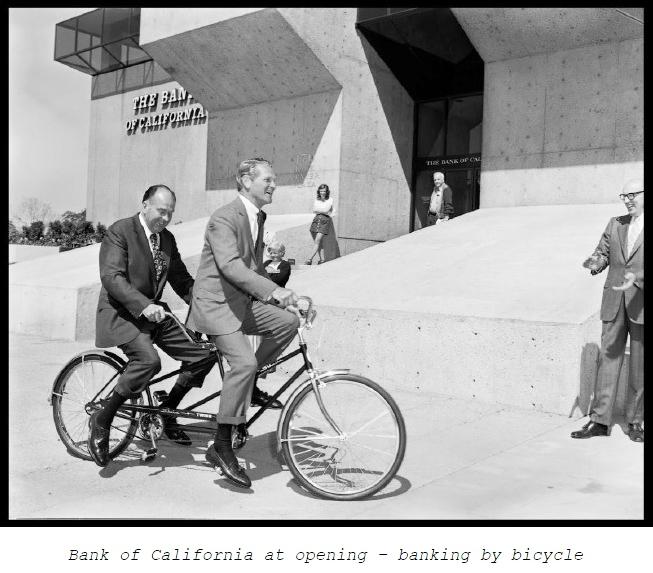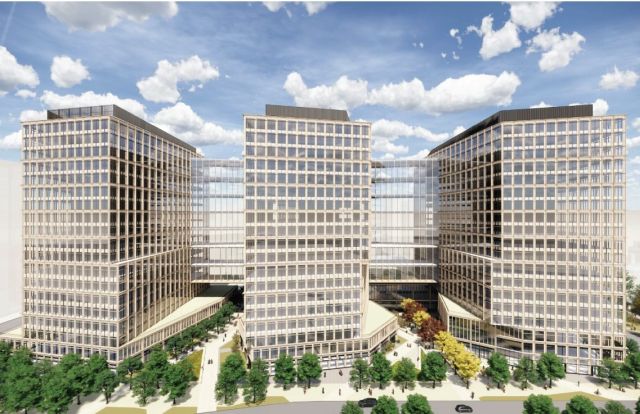
Modernists Hope to Save Brutalist Bank
 |
As the first Pelli in Pelli Clarke Pelli, César Pelli designed or helped design some of the most stylish and some of the largest buildings over the past five decades, including the Petronas Towers in Kuala Lumpur, the 'Blue Whale' Pacific Design Center in LA, and in San Francisco, the restrained yet elegant JPMorgan Chase Tower at 560 Mission St.
Pelli, an Argentinian who later ran Yale’s school of architecture, was a young man working for the esteemed firm headed by Victor Gruen when he gave San Jose one of its great Brutalist monuments, the Bank of California, which was completed in 1973.
Today fans of modern architecture are trying to save it, proclaiming the building to be a valuable part of history, a strong design, and the work of a master.
Developer Jay Paul has proposed ripping it, and several other buildings on an eight-acre site, to build Cityview Plaza, three 19-story towers.
The Preservation Action Council of San Jose says “the building is one of San José's best examples of Brutalist architecture and its only known Pelli design. Many have likened its sculptural, monumental form to an abstract Sphinx.”
 |
The council is running a Save the Sphinx campaign.
In architecture speak, by the way, 'Brutalist' does not refer to torture, though some critics disagree. The term comes from the French 'béton brut,' meaning 'raw concrete'; Brutalist buildings were generally expressive and sculptural.
Four of the nine buildings to be demolished have historic value, according to the National Trust for Historic Preservation. Architects are Gruen Associates and Skidmore, Owings & Merrill. The complex, Park Center Plaza, was a pioneering redevelopment project that got underway during the late 1960s.
“We have significant concerns with the proposed demolition of the Bank of California/Sumitomo Building at 170 Park Center Plaza...an early work of master architect César Pelli as chief of design with Gruen Associates,” the Trust writes. “In short, we do not believe the City has adequately explored alternatives to save this icon of Modernism.”
The California Preservation Foundation has suggested that the project could proceed while preserving the bank. “We are particularly concerned about the lack of detail with regard to Alternative 6, which would preserve the Bank of California, arguably the most architecturally significant building in the project area,” the CPF has said.
 |
Hannah Simonson, president of the Northern California chapter of Docomomo, a preservation group, wrote to the city in favor of the building.
“Organizations such as Docomomo US/NOCA and Preservation Action Council of San Jose locally, and groups like SOS Brutalism abroad, are working to build awareness and appreciation of these often-misunderstood buildings and believe that this building is clearly eligible for the California Register of Historical Resources and to be a San Jose City Landmark,” she wrote.
The city of San Jose’s Historic Landmarks Commission has also opposed the bank’s demolition – unanimously.
“Despite the ‘Sphinx’ being a known Candidate City Landmark and eligible for listing in the National Register of Historic Places, Jay Paul made no attempt to integrate it into its redevelopment plans, despite the fact that its three proposed towers would easily fit onto the site without the Sphinx's demolition,” San Jose's Preservation Action Council has argued.
 |
But the developer argues that the bank building, which for a few years was used as a family court, cannot remain on the site because it would greatly reduce the square footage of the proposed development.
Because the bank is integrated with underground parking, its preservation “would create a structural challenge for the deep excavation proposed for the new office towers.” The developer says it would not be able to provide as much underground parking as planned, and thus would have to provide surface parking, which in turn would reduce the amount of usable space.
Cities have to grow and change. To what extent can they do so while preserving their history? The Bank of California is more than architecture. It represents San Jose’s efforts in the 1960s and '70s to revive a downtown that had become “a dull and dirty place,” in the words of architectural historian Leslie Dill, who has surveyed the area for the city.
“City leaders hoped to remake the central commercial area with new life, as well as revitalize the older residential areas in the greater downtown frame,” she wrote.
Some proponents of the new project have asserted without evidence that the designer of the bank was not Pelli at all but an intern, and thus the building is without value. How likely is it Gruen would have farmed out an important job to an intern?
But let’s say he did. That would make the bank even more remarkable – that such a strong, simple building, expressive of security and strength, could come from such young hands.
But Dill found evidence both stylistic and documentary showing the bank was the work of Pelli.
“A unique example of Modern architecture, that could be described using the terms late Expressionist, Brutalist, or Metaphoric,” she writes, “the design of the former Bank of California is monumental in scale while relatively small in size. The building is representative of the work of César Pelli in his early years, and it uses motifs and forms that are recognizable and distinctive."
- ‹ previous
- 423 of 677
- next ›



